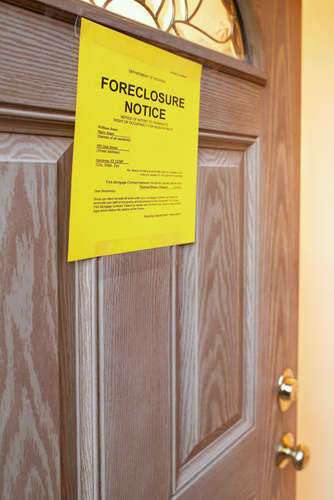
How to Evict a Tenant in North Dakota
Dealing with difficult tenants can be frustrating for every landlord. Even the most thorough tenant screening process can sometimes not be enough to avoid rental disputes and evictions. As a landlord or property manager in North Dakota, it’s essential to know the legal requirements for evicting a tenant before beginning the process.
The eviction process in North Dakota can be time-consuming and requires adherence to strict laws and guidelines. But with proper preparation and knowledge of the law, the eviction process can be relatively straightforward. Here’s what you need to know to evict a tenant in North Dakota.
Grounds for Eviction in North Dakota
Before beginning the eviction process, you must have legitimate grounds for eviction. In North Dakota, there are several reasons why you can evict a tenant, including the following:
Non-payment: If a tenant fails to pay rent in a timely or suitable manner, the landlord can commence eviction proceedings.
Violation of lease terms: If the tenant violates the lease terms, such as subletting or conducting illegal activity, the landlord can begin eviction proceedings.
The end of the lease: The most common reason for eviction is the conclusion of the lease term.
Holdover tenancy: If a tenant remains in a rental unit after the lease has expired, the landlord can commence eviction proceedings.
Illegal activities: If the tenant engages in illegal activities such as drug use or sales, the landlord can move to evict.
No matter the reason, landlords must demonstrate that they are acting in compliance with North Dakota law. Without a clear reason for eviction, a landlord’s case may not stand up in court, making it crucial to know the grounds for eviction in North Dakota.
Notice Before Filing for Eviction in North Dakota
Before beginning eviction proceedings, landlords in North Dakota must give tenants proper notice. This allows tenants an opportunity to rectify any issues that may be leading to the eviction. Notice giving is a fundamental step in the eviction process, and it must be followed strictly under North Dakota law. As a landlord, you should provide the tenant with a written notice that explicitly specifies the reason for the eviction and the duration they have to resolve the issue.
Three Notice Types in North Dakota
Three types of eviction notice are available to landlords in North Dakota, including the following:
– Notice to Quit: If a tenant violates lease terms, a notice to quit must be given, which notifies the tenant of the violation and gives them a specific number of days to vacate the rental unit. The timeframe allowed depends on the severity of the violation, which can fall anywhere from three to thirty days.
– Notice of Non-Payment: If a tenant is behind on rent, landlords can give a notice of rent non-payment. It specifies the amount of rent outstanding and gives tenants a recommended number of days to pay or face eviction.
– Notice of Termination: If a rental lease has expired, landlords should provide a written notice of termination that informs tenants that their lease will not be renewed.
After issuing an eviction notice to tenants in North Dakota, a landlord may not enter a rented unit uninvited. This prohibition is in effect until either of the two following conditions is met: the tenant vacates the unit or the eviction process is completed.
The Eviction Process in North Dakota
If the tenant does not meet the conditions after receiving the eviction notice, the landlord may commence formal eviction proceedings in court. Here are the steps to take to evict a tenant in North Dakota:
1. File eviction paperwork.
The landlord must file a complaint in the local circuit court clerk’s office where the rental unit is situated to commence the eviction process. This paperwork will include the grounds for eviction, the lease agreement, the eviction notice, and lease terms, among other information. The court will then issue a summons and entry of appearance ordering the tenant to appear in court.
2. Serve the eviction paperwork.
After filing the eviction papers, landlords must arrange to have the documents served properly. In North Dakota, eviction notices can be served in several ways such as personal service, posting of the notice on the rented property, or certified mail. Whichever method is chosen, it must be in accordance with North Dakota law.
3. Attend the hearing.
Once the tenant receives the eviction notice, they have five days to file a response with the court requesting that the eviction order does not proceed. If the tenant does not submit a response, the matter will proceed to the hearing, and the court will render a decision. Both parties must appear in court and argue their respective positions.
4. Wait for the verdict.
After both sides have presented their evidence and arguments, the court will issue its verdict. If the judge rules in favor of the landlord, the court will issue a writ of possession, which gives the landlord the right to proceed with the eviction process and regain possession of the property. North Dakota typically gives tenants three calendar days to vacate the rental unit following eviction proceedings.
Assistance and Representation
Landlords in North Dakota that face eviction proceedings must follow the strict legal process, but sometimes, it can be challenging to navigate alone. Fortunately, North Dakota law does not require landlords to hire attorneys for eviction proceedings. However, it’s always a good idea to have legal advice. If you need assistance or representation, you may choose a licensed attorney, a professional property management firm, or a qualified eviction specialist.
Final Thoughts
Evicting a tenant in North Dakota is often the last resort after all other avenues have failed. Despite the challenges, landlords must follow the proper legal procedure to protect themselves and their property. Before beginning eviction proceedings, landlords should seek legal guidance and ensure that they comply with North Dakota eviction laws. Following all of the eviction procedures in North Dakota can ensure that landlords become successful in evicting tenants, regaining possession of the property, and avoiding any legal repercussions.
How to evict a tenant in North Dakota
Whether you are a landlord or tenant, you have certain protections under the law. Some of the most important of these concern the proper steps for how to evict tenants in North Dakota. A landlord cannot decide to change the locks or otherwise deny you access to property of your own accord. If they wish to evict you there are many reasons they can do so. Here is what you should know about the legal procedure for how to evict a tenant in North Dakota.
As a tenant, you have many obligations. If a landlord is trying to find out how to evict tenants in North Dakota, they may have decided to take this action for the following reasons:
• You have failed to pay your rent.
• If you are behaving in such a manner that other residents in a building, this is a reasonable cause for a landlord to begin researching how to evict a tenant in North Dakota.
• Any illegal actions you take can lead to your removal from an apartment. For example, if you are selling or consuming narcotics, a landlord will be in the legal right in deciding to find out how to evict a tenant in North Dakota.
• If your contract states that you are not allowed to have a pet, you must respect this stipulation. Failure to do so gives landlords the option of researching to evict tenants in North Dakota.
• If you allow too many people into a property and violate the terms of your contract, you risk eviction.
However, the law also states that all proper steps must be followed. A landlord must be aware of the legal process for how to evict a tenant in North Dakota. They may not simply change the lock or otherwise bar your access to a piece of property for which you have signed a contract. As a landlord, you risk litigation if you fail to properly research how to evict a tenant in North Dakota.
In order to perform this process properly, you must first notify a tenant in advance of your intent to do so. Inform them in writing that they have three days to leave the property. While this is the first correct legal step in how to evict a tenant in North Dakota, they may not comply. If this is the case, you will need to engage with the court system.
When researching how to evict tenants in North Dakota, note that you must not only file a complaint with the court but have anyone you wish to leave your property formally served with a copy of your complaint. After a tenant has been served, a hearing will take place before a judge no sooner than three days afterwards and no longer than 15 days later. Both parties will make their case before a judge issues their ruling. Failure to follow these steps means you have not respected the laws dictating how to evict tenants in North Dakota.




























